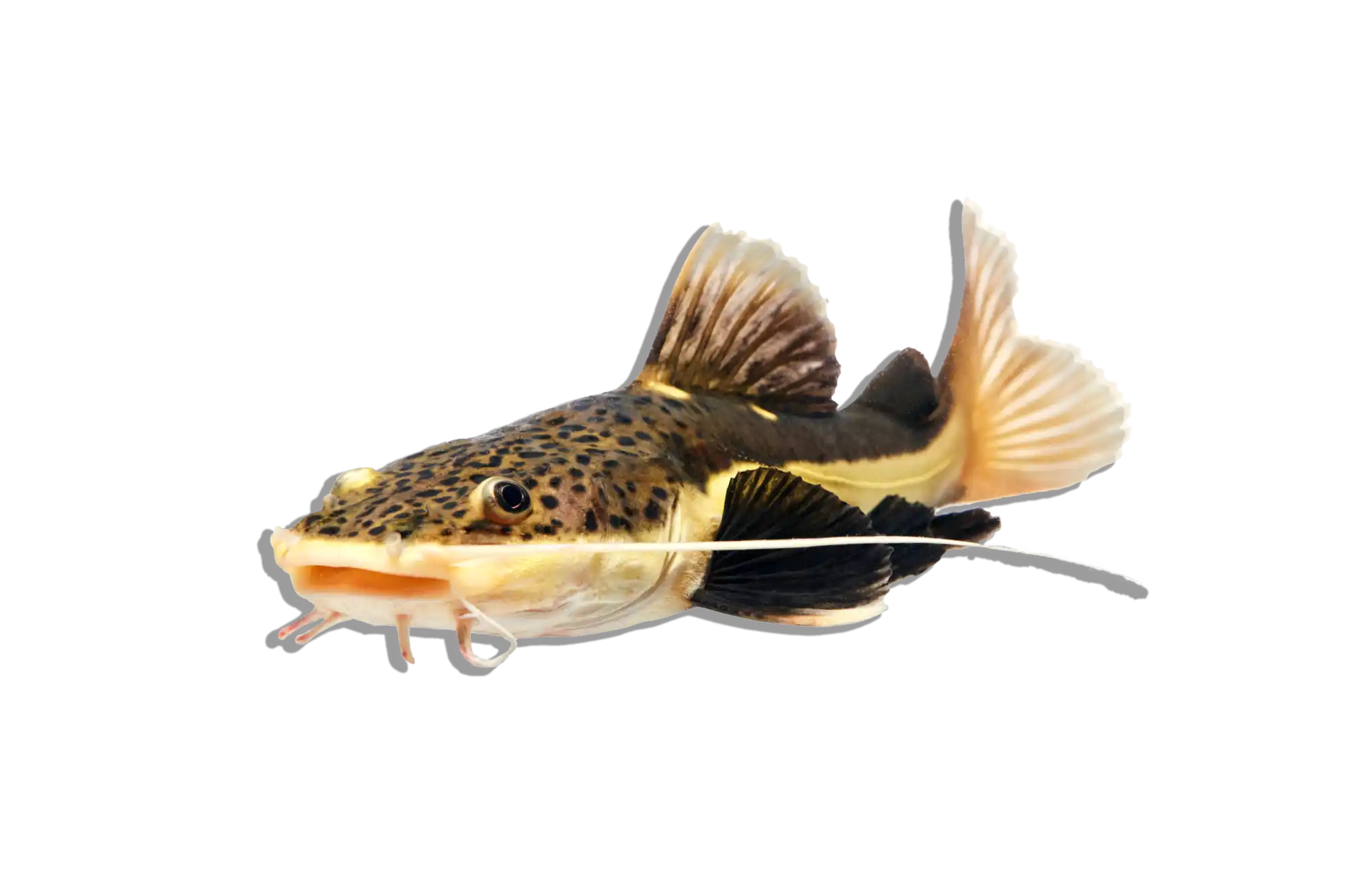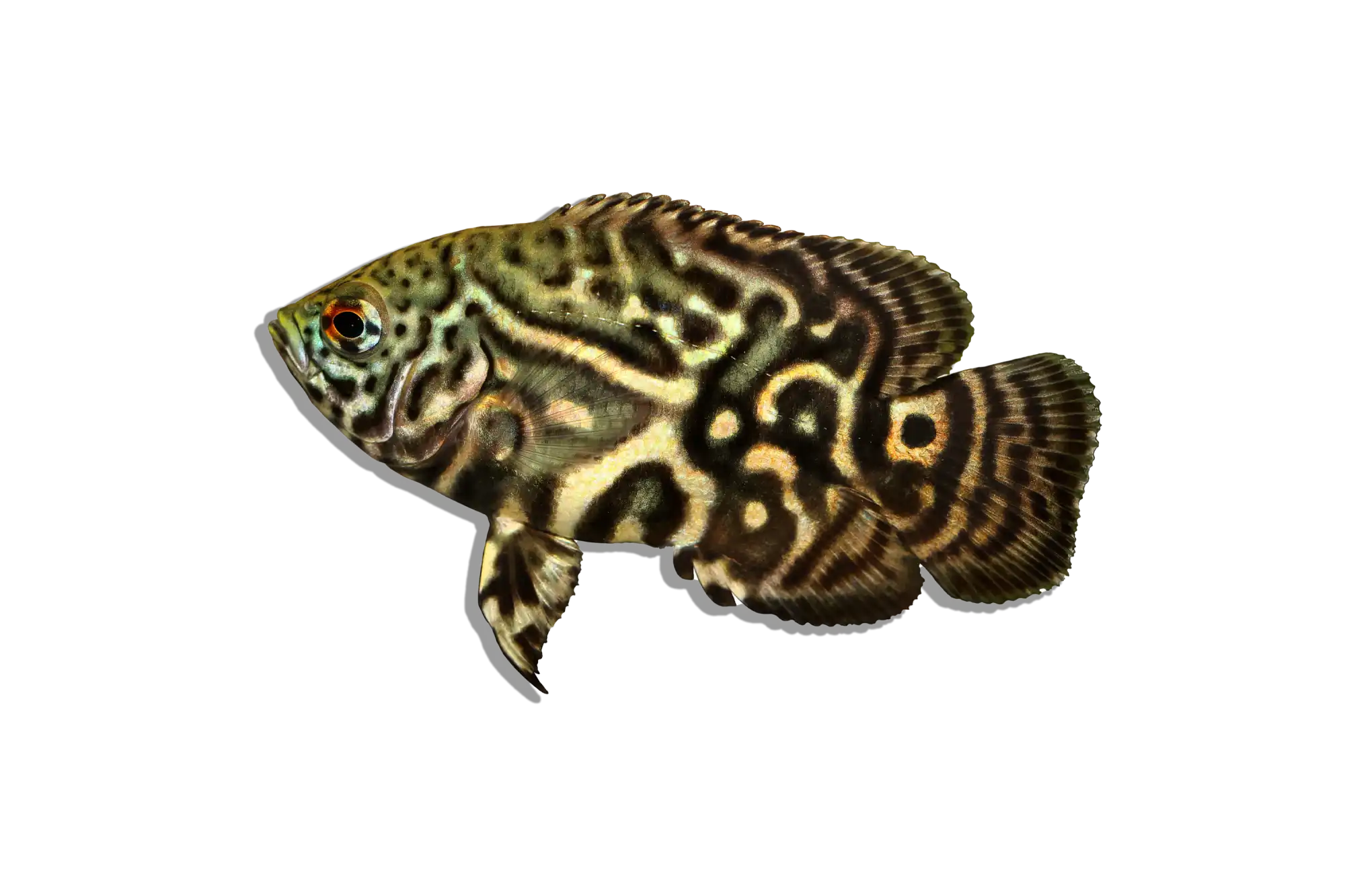Description
Common Name: Blue Zaire Kapampa Frontosa Cichlid
Scientific Name: Cyphotilapia frontosa (Kapampa variant)
Other Names: Blue Zaire Frontosa, Kapampa Frontosa
The Blue Zaire Kapampa Frontosa Cichlid is a stunning freshwater fish known for its vivid blue coloration and regal presence. This particular variant of Frontosa cichlid hails from the Kapampa region in the Zaire (now Democratic Republic of Congo) section of Lake Tanganyika. It is renowned for its distinctive deep blue hues, especially prominent in the fins and face, along with the characteristic hump on the head of adult males.
Habitat and Distribution: The Blue Zaire Kapampa Frontosa is native to the rocky shorelines of Lake Tanganyika in East Africa. These cichlids inhabit deep waters, often at depths of 30 to 50 meters (100-165 feet), where they find shelter among rocks and crevices. The water in their natural habitat is clear, hard, and alkaline, with a stable temperature and plenty of hiding spots created by the rocky substrate.
Size and Lifespan: In captivity and the wild, Blue Zaire Kapampa Frontosas can grow up to 12-15 inches (30-38 cm) in length. Their lifespan can range from 15 to 20 years, depending on the care and conditions provided in the aquarium. Ensuring a proper diet, clean water, and adequate space is crucial for their longevity and well-being.
Diet and Behavior: Blue Zaire Kapampa Frontosas are primarily carnivorous, feeding on smaller fish and invertebrates in the wild. In an aquarium, their diet should consist of high-quality cichlid pellets, supplemented with live or frozen foods such as krill, shrimp, and small fish. These cichlids are known for their peaceful and somewhat shy nature, preferring to stay close to their chosen hiding spots. They are best kept in groups, as they are social fish that thrive in a community of their own kind.
Breeding and Reproduction: Breeding Blue Zaire Kapampa Frontosas in captivity can be rewarding but requires patience and specific conditions. They are mouthbrooders, with females carrying fertilized eggs and fry in their mouths for several weeks until the young are ready to swim freely. To encourage breeding, provide a spacious tank with plenty of hiding spots and maintain excellent water quality. Males will establish territories, and multiple females will form a harem.
Aquarium Care and Tank Requirements: To keep Blue Zaire Kapampa Frontosas, a large aquarium of at least 150 gallons is recommended to provide ample swimming space and accommodate their size and social structure. The tank should include plenty of rocks, caves, and hiding spots to mimic their natural habitat and reduce stress. A sandy or fine gravel substrate is ideal, along with moderate water flow to simulate lake conditions. Efficient filtration and regular water changes are essential to maintain water quality. Maintaining stable water parameters is crucial for their health.
Ideal Tank Mates: Blue Zaire Kapampa Frontosas can be kept with other peaceful, similarly sized fish that share similar water parameter requirements. Suitable tank mates include other Tanganyikan cichlids, larger catfish, and peaceful tank mates like Synodontis catfish. Avoid housing them with overly aggressive or significantly smaller fish that may cause stress or be seen as prey.
Difficulty Level: Intermediate to Advanced. While they are hardy and adaptable, their specific dietary needs, social structure, and requirement for stable water conditions require attentive care and a well-maintained aquarium.
Water Parameters:
- Temperature: 75-82°F (24-28°C)
- pH: 7.8-9.0
- General Hardness (GH): 10-20 dGH
- Carbonate Hardness (KH): 8-12 dKH
- Ammonia: 0 ppm (ideal), up to 0.25 ppm (max)
- Nitrite: 0 ppm (ideal), up to 0.25 ppm (max)
- Nitrate: <20 ppm (ideal), up to 40 ppm (max)
Additional Information:
- The Blue Zaire Kapampa Frontosa's vibrant blue coloration and peaceful demeanor make it a standout addition to any large aquarium, adding both beauty and grace.
- These cichlids are known for their longevity and slow growth rate, so patience is required when raising juveniles.
- In their natural habitats, Blue Zaire Kapampa Frontosas play a role in controlling populations of smaller fish and invertebrates, contributing to the ecological balance.
- Fun fact: Frontosas can live for decades, making them a long-term commitment and a rewarding species for dedicated aquarists. Their calm demeanor and social nature often lead to strong bonds with their caretakers, providing years of enjoyment.



















